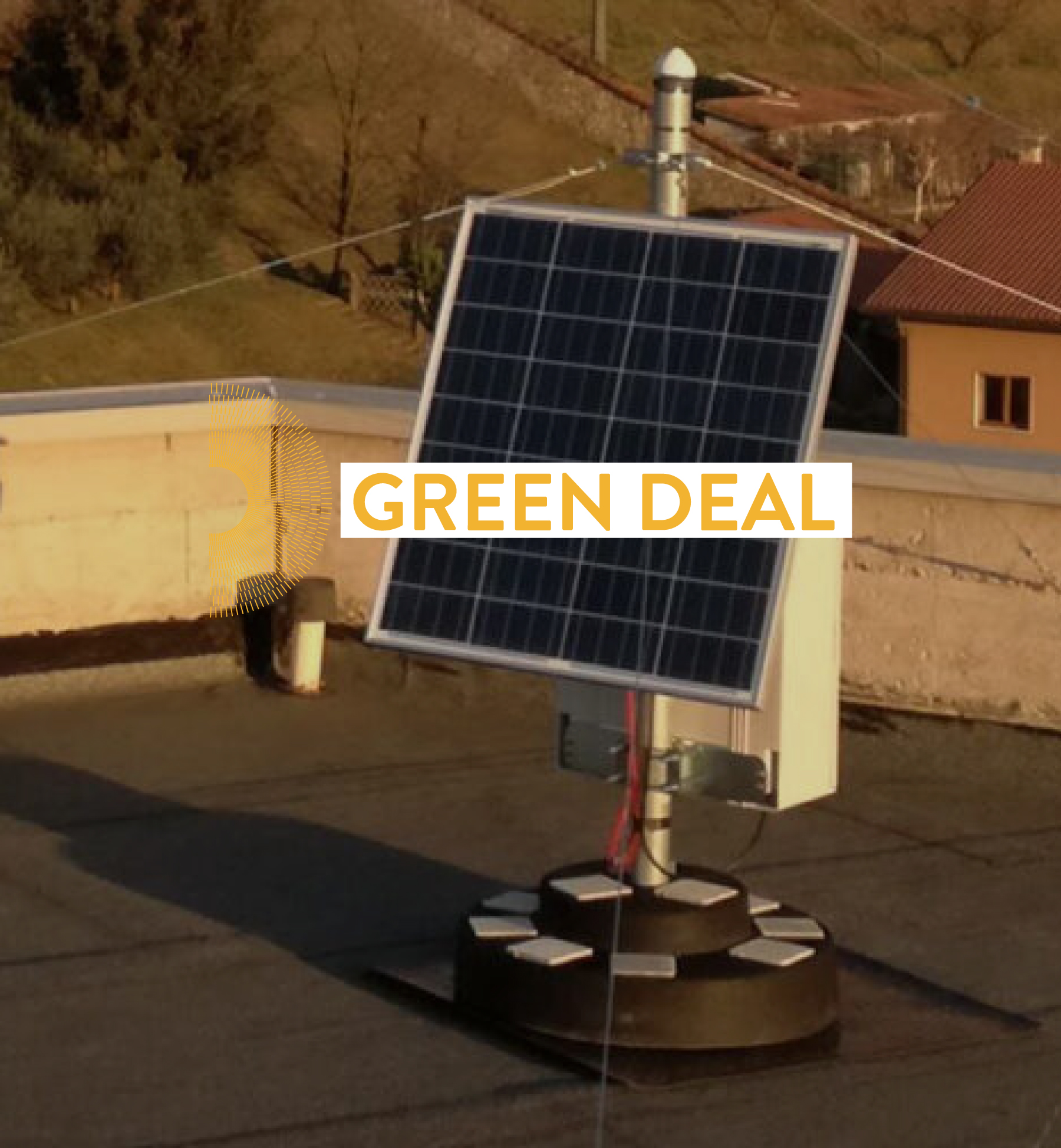
Author: admin

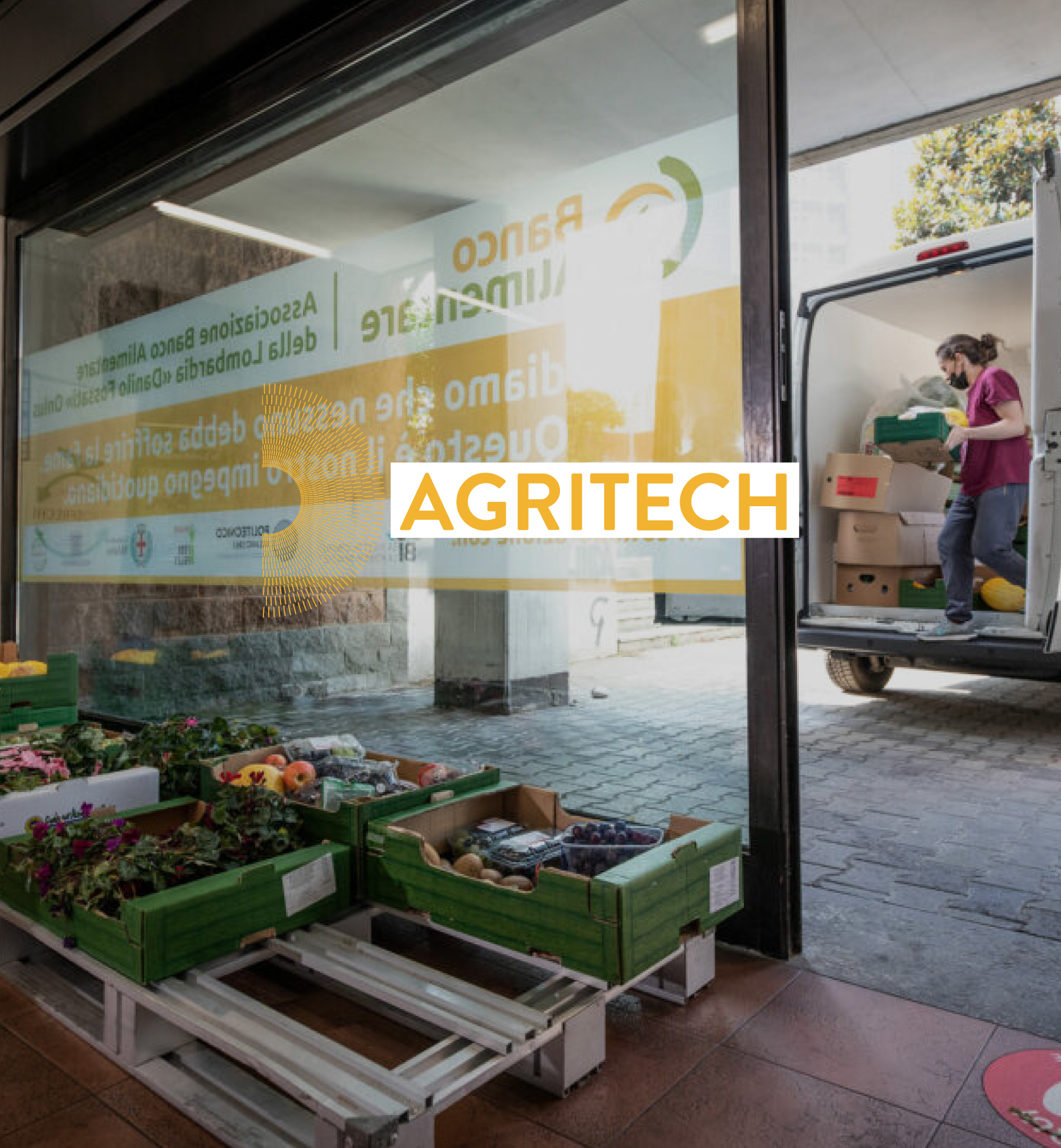
Earthshot Prize awarded to Milan and the neighborhood hubs made in Polimi
The City of Milan won the first edition of the international prize Earthshot Prize, with strong> neighborhood hubs project against food waste in the “Build a Waste Free World" category.
The Earthshot Prize, conceived and financed by the Royal Foundation of The Duke and Duchess of Cambridge, was created to reward the most effective actions aimed at protecting the environment and provides for the award of 1 million of pounds (1.17 million euros) to each of the winners of the five categories and the support of the Royal Foundation for the coming years.
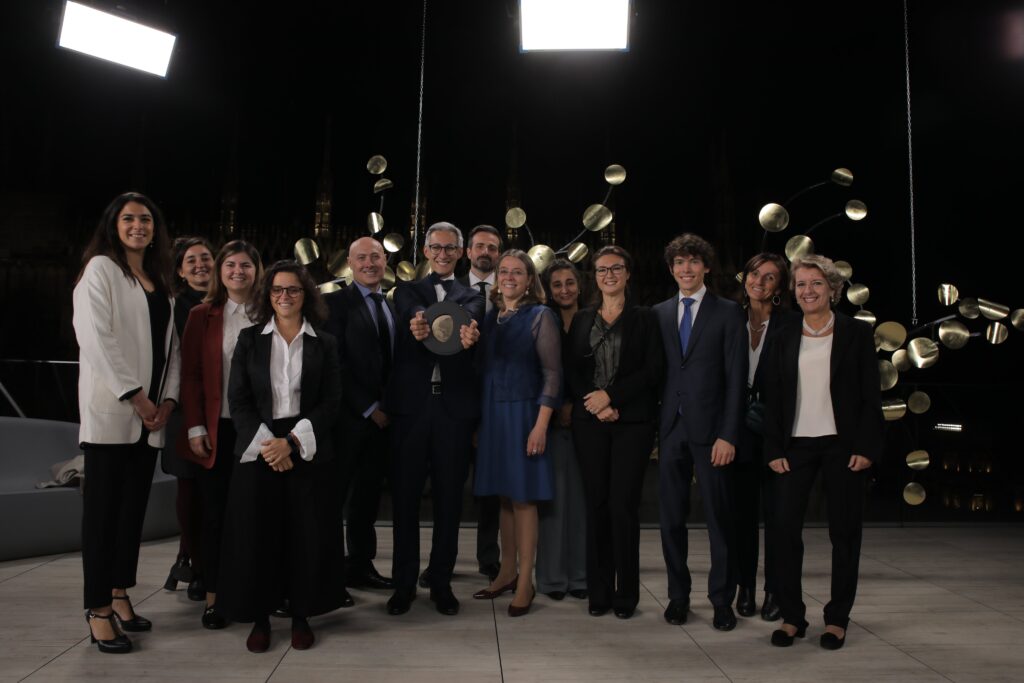
“Milan is the first major city to apply a policy against food waste at the city level that includes public bodies, food banks, charities, NGOs, universities and private companies. And it's working - as it is reported in Corriere della Sera on the reason behind the award -. Today the city has three Food Waste Hubs, each of which recovers about 130 tons of food per year or 350 kg per day, equivalent to about 260,000 meals".
MILANO “ZERO WASTE” SINCE 2017
The project - which was chosen among other 750 candidate initiatives around the world - was created in 2017 from an alliance between the Municipality of Milan, Politecnico di Milano with the research group of the Department of Engineering Management Food Sustainability Lab which includes the Food Sustainability Observatory, Assolombarda, Fondazione Cariplo and the QuBì Program.
The creation of the first Hub involved the Lombardy Food Bank, allowing the distribution of meals to 3,800 people in a year, thanks to the contribution of 20 supermarkets, 4 company canteens and 24 third sector entities. Today in Milan there are 3 neighborhood hubs in Isola (2019), Lambrate (2020) and Gallaratese (2021) .
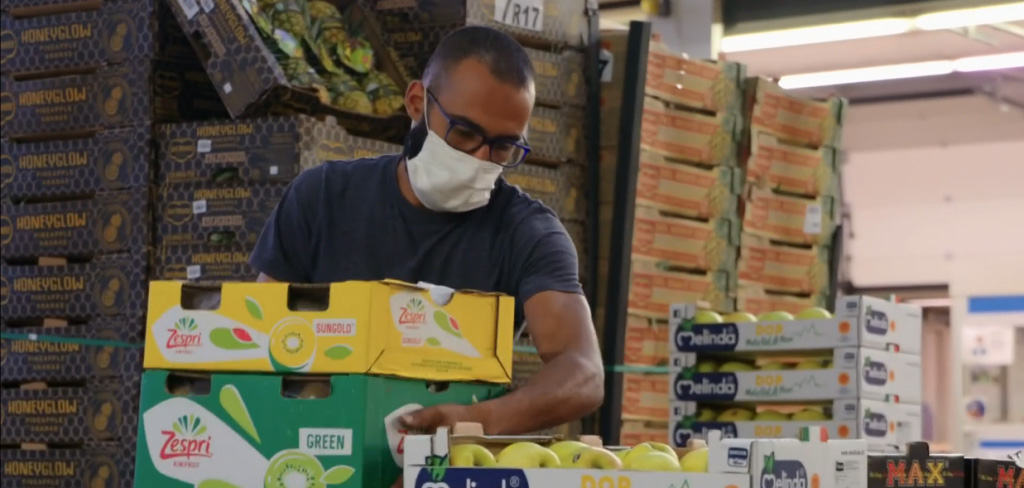
"Winning the Earthshot prize is the recognition of a great team effort that involved the whole city - comments Palazzo Marino -: thanks to the Municipality and to many realities of the third sector, universities, large-scale distribution and philanthropy operating in the area ".
The £ 1 million prize from the Royal Foundation will be invested in the opening of new hubs in the area , guaranteeing their long-term sustainability and replicability in the network of cities that work with Milan on the food policy .
Find out all about frontier research at Politecnico and on the topics defined by the European Commission as part of the Recovery Plan. Visit the Next Generation EU website of the Politecnico di Milano .
Credits home: www.foodpolicymilano.org/
Credits header: @earthshotprize su Twitter

A new polimi study makes the cover of Catalysis Science and Technology
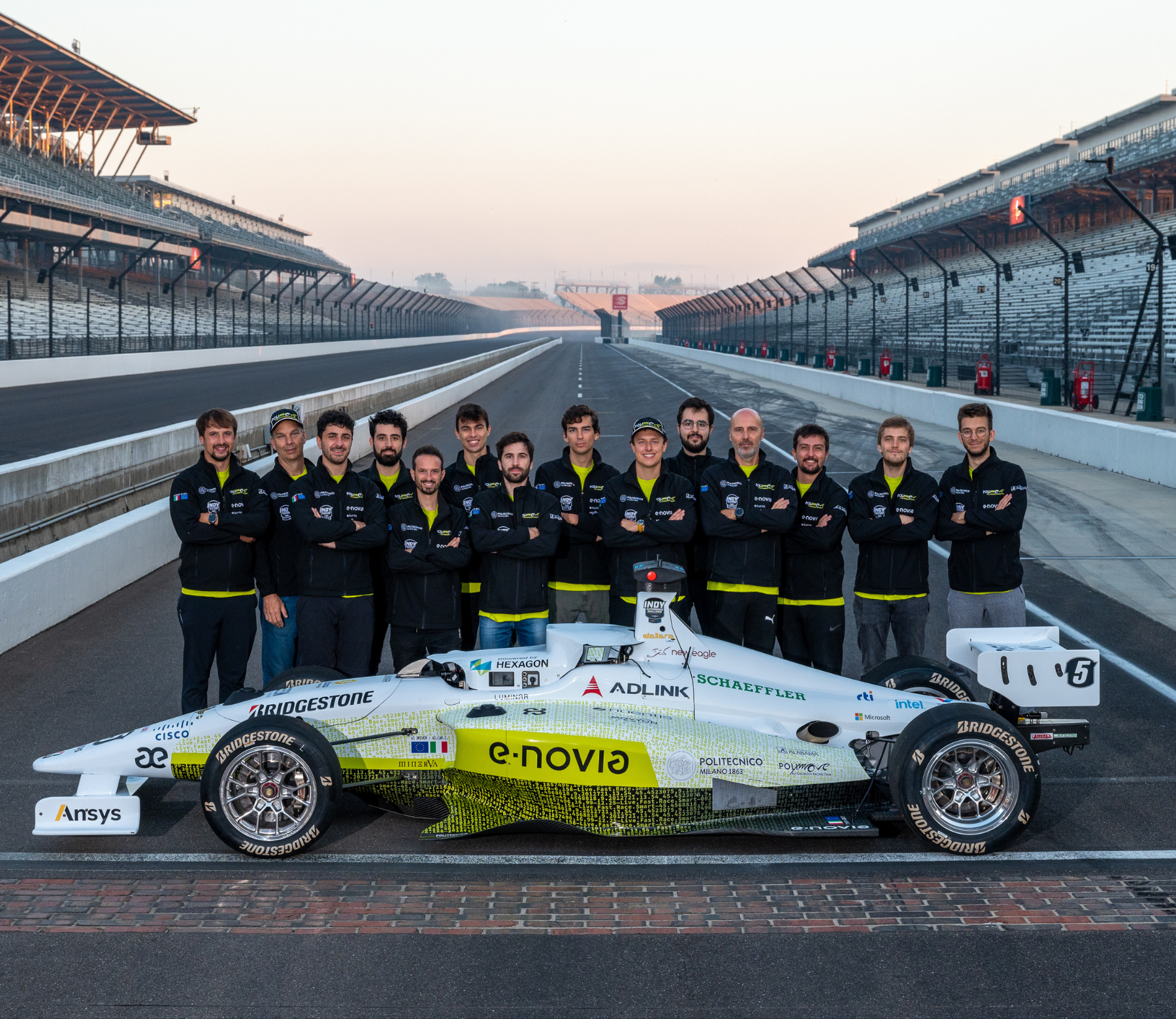
Indy Autonomous Challenge: Polimove misses gold by a whisker
The first edition of the ' Indy Autonomous Challenge Powered by Cisco (IAC) , the first unmanned car speed championship at the famous Indianapolis Motor Speedway .
The intense competition, which lasted over 6 months between tests and qualifications races, saw the best universities in the world programming Dallara IL-15 racing cars, modified for autonomous driving.
On the Indianapolis track competed 28 teams of over 500 university students from 39 universities in 11 countries. Representing Italy the PoliMOVE team, led by prof. Sergio Savaresi: one of the leading international research groups in the field of automotive control, intelligent vehicles and smart mobility.
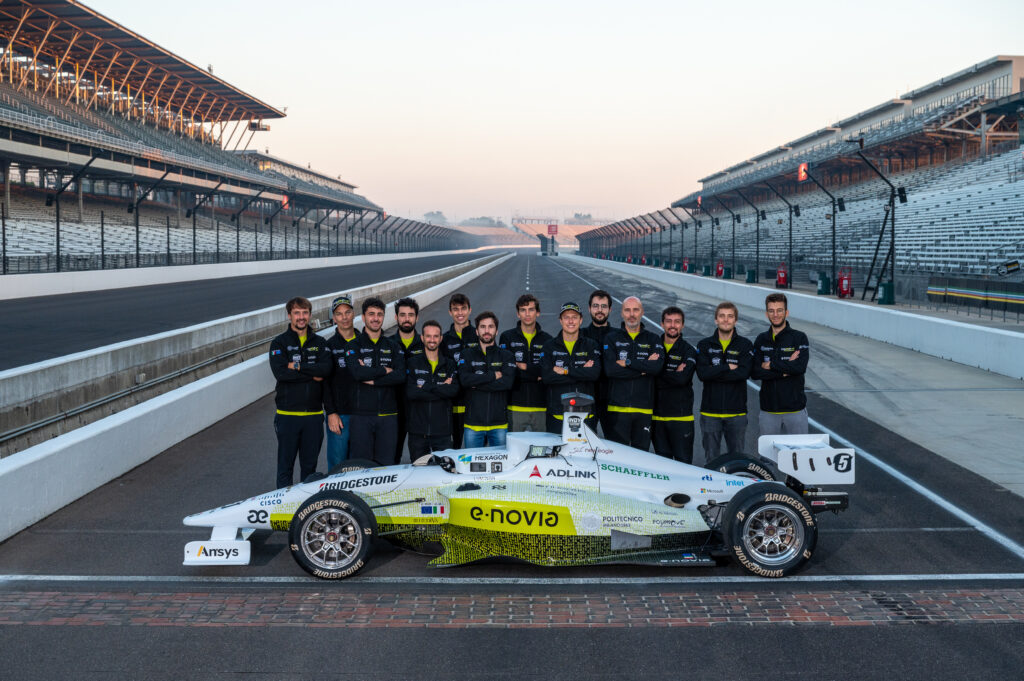
A INCH FROM THE FINISH LINE
The final competition on October 23rd ended on a bittersweet note for our team, leaving Indianapolis too early: after having dominated the last months of the qualifiers the car crashed into the guard rail .
“The connection between two very important control units disconnected”, said Professor Savaresi, “the engine control unit and the one that controlled the steering and brakes. We couldn't do anything”.
The group, made up of undergraduates and PhD students from Politecnico, played all their cards during the final, exploring the limits of the machine and risking more speed than all the other teams.
A strategy that betrayed them one step away from the finish line, but not without glory: the breakdown occurred right at the moment when PoliMOVE set the speed record of the championship.
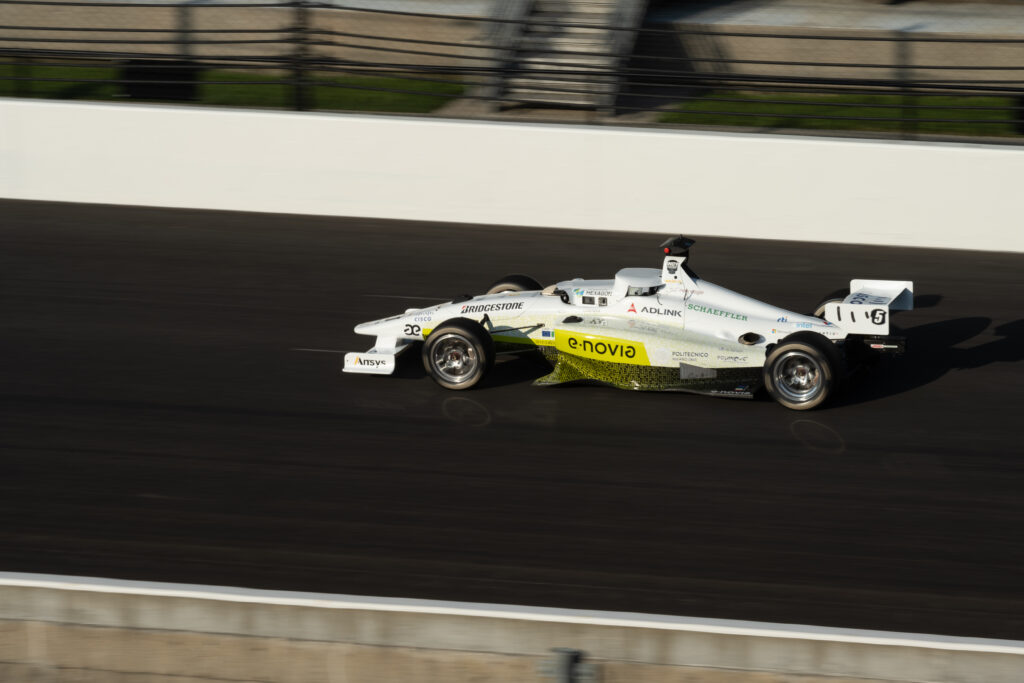
“252 km/h , with the engine going at 6000 rpm: we broke the record and crashed 10 seconds later. But… racing is racing ”, continues Savaresi,“ and these cars are still very unreliable prototypes. We have always been among the fastest, in the race we pushed to the limit, being the first to explore the strength limits of the car ”.
We have tested that these cars are not yet robust enough. The TUM Autonomous Motorsport of the Technische Universität of Munich took first place. In the winning team, however, there was a piece of Politecnico: the competing car, the same for all the teams (except in the autonomous driving software), is a Dallara EXP, designed by the Dallara Group and its founder, Alumnus Giampaolo Dallara.
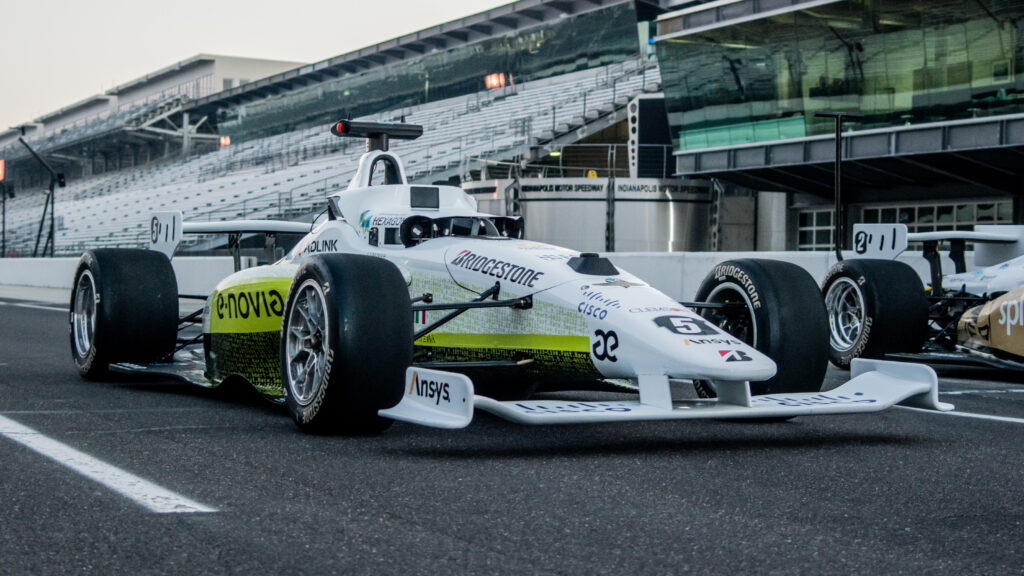
TOWARDS THE WORLD RECORD
The event met with great media and public success: thousands of attendees and over 20,000 viewers on the live stream, as well as 350 high school STEM students representing over 50 urban, rural and suburban school districts across Indiana.
"For our students however, it was an intense, beautiful and very formative experience", continues Savaresi. "They faced for months, on the field, a racing approach , extremely focused on the goal. It is a context in which the times are very rigidly marked. During the tests you have to be ready at the right time and everything has to work. The group has become very close-knit, has developed a concrete working method and great discipline in managing pressure”.
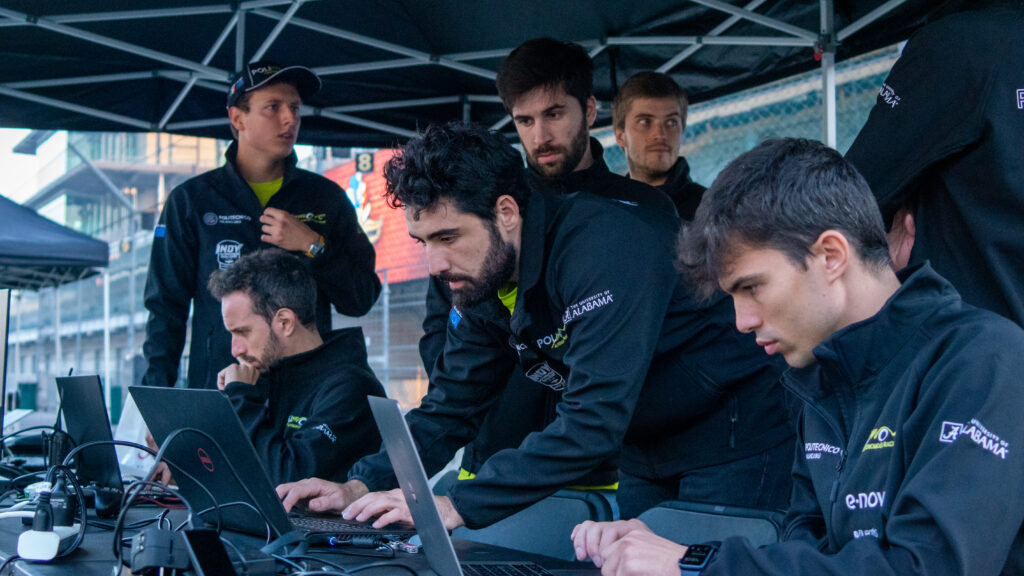
And now? The experience has finished?
“No, we will continue to work on the software and on the machine”, answers Savaresi, who concludes: “it is not yet official, but we will almost certainly try to make up for it in a overtaking race in Las Vegas, on January 7, during CES 2022 . Furthermore, we are one step away from the world record for speed in autonomous driving, which today is 282 km/h, held since 2019 by a Roborace machine . We are looking for a track to break this record . And the success of the first edition of the IAC suggests that there could be a second in 2022".
If the chance is presented, we will all be rooting for Politecnico!
You can support this project with a donation.Give now
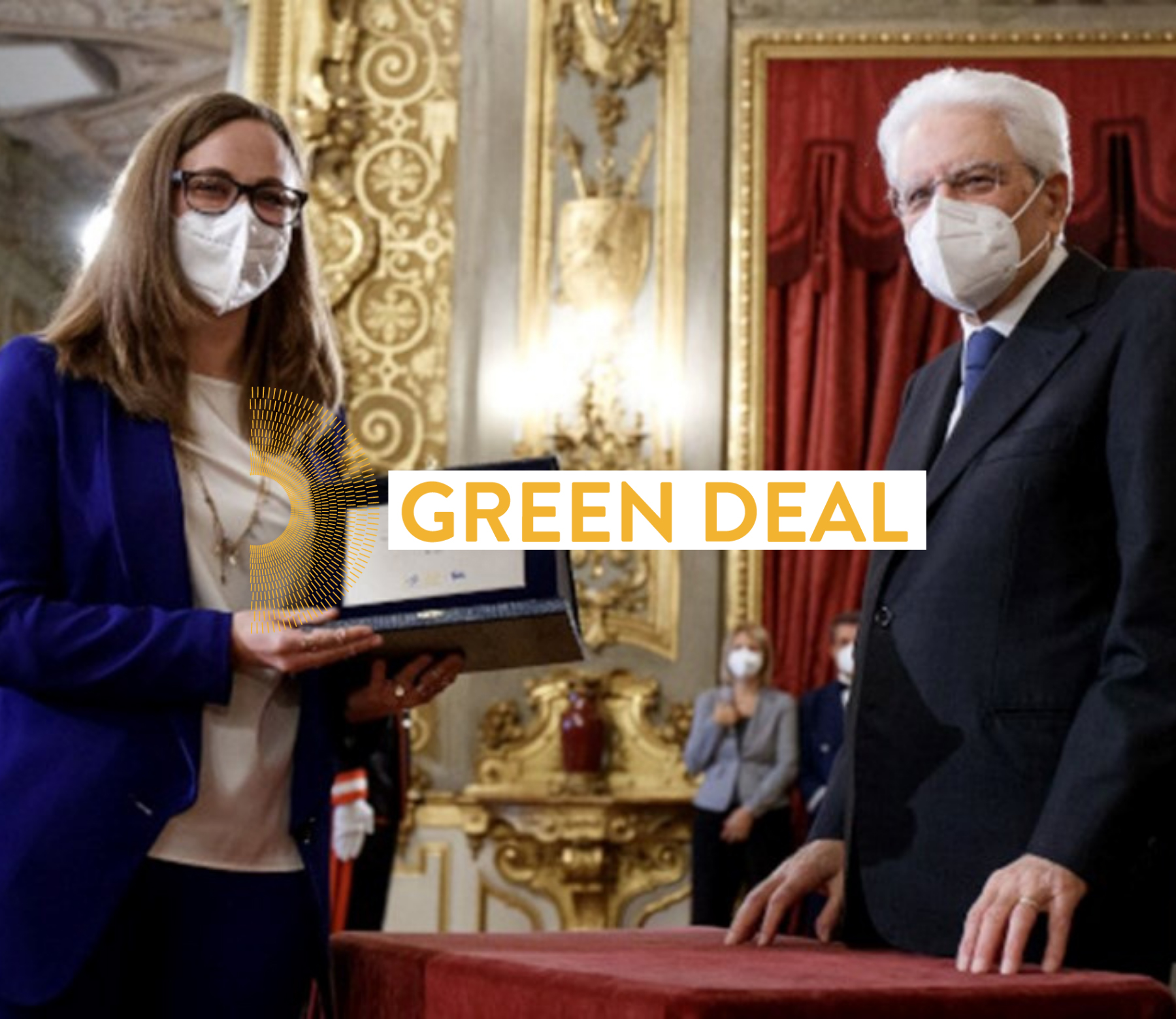
Eni Award: The President of the Italian Republic awards two Alumnae of Politecnico
Monica Ferro and Greta Colombo Dugoni, Alumnae and researchers of the Politecnico di Milano, were awarded at the Palazzo del Quirinale in the presence of the President of the Republic Sergio Mattarella on the occasion of the XIII edition of Eni Award, the scientific research award of Eni , with the special mention "Eni Joule for Entrepreneurship".
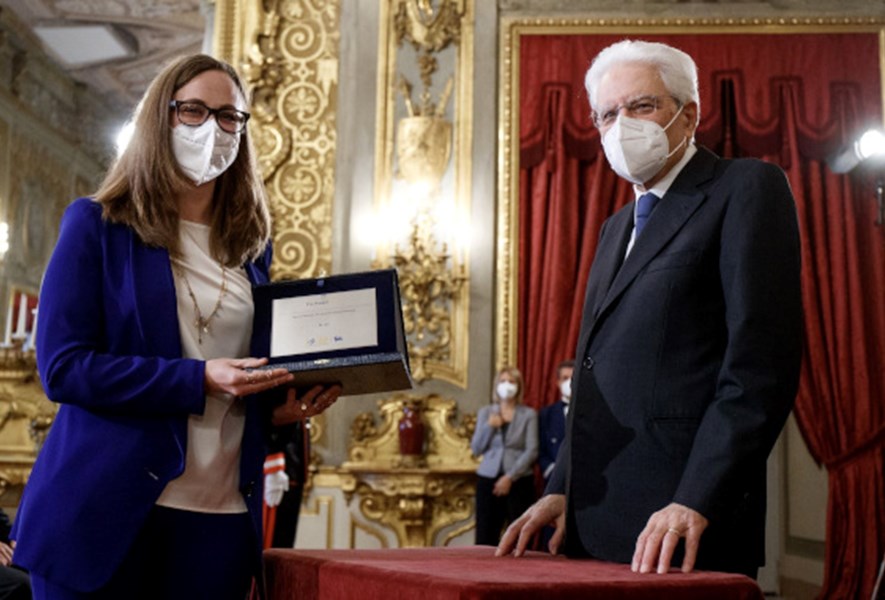
The award, also known as the "Nobel of Energy" , is considered an international reference point for research in the fields of energy and the environment.
Starting from this year Eni, through its Joule School for Entrepreneurship , has established an even further recognition for teams, university spin-offs and startups aimed at promoting the application, enhancement and technology transfer, while promoting the creation of a sustainable innovation ecosystem.
BI-REX: A NEW LIFE FOR AGRO-FOOD WASTE
Alumnae Ferro and Colombo Dugoni received the award for the activity they carried out in the startup Bi-Rex , of which they are founders, developing a green process for the production of biopolymers, to give new life to agro-food waste. The project is concerned with enhancing biomass to obtain products with high added value such as cellulose, chitin and lignin in an eco-sustainable way.
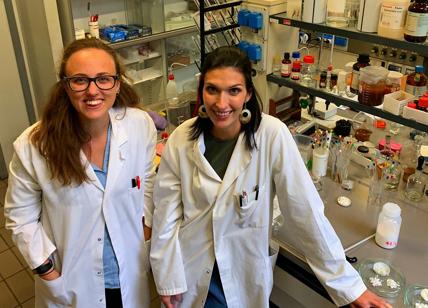
"These scraps are usually burned, but we - explain the researchers to Affaritaliani.it - we want to give them a new life. In chemistry these substances are included in biomass and by recovering them, the costs for their incineration are also avoided. In addition, cellulose can also be extracted from the processing residues of bioplastics , bags for the collection of wet waste so to speak. "
The Alumnae have already brought Bi-Rex to four patents and the winning of important loans : the grant of 30,000 euros from Switch2Product, the acceleration path in PoliHub - Innovation Park & Startup Accelerator and 160,000 euros from the fund di investments Poli360, an investment fund managed by 360 Capital Partners.
Find out all about frontier research at Politecnico and on the topics defined by the European Commission as part of the Recovery Plan. Visit the Next Generation EU website of the Politecnico di Milano .
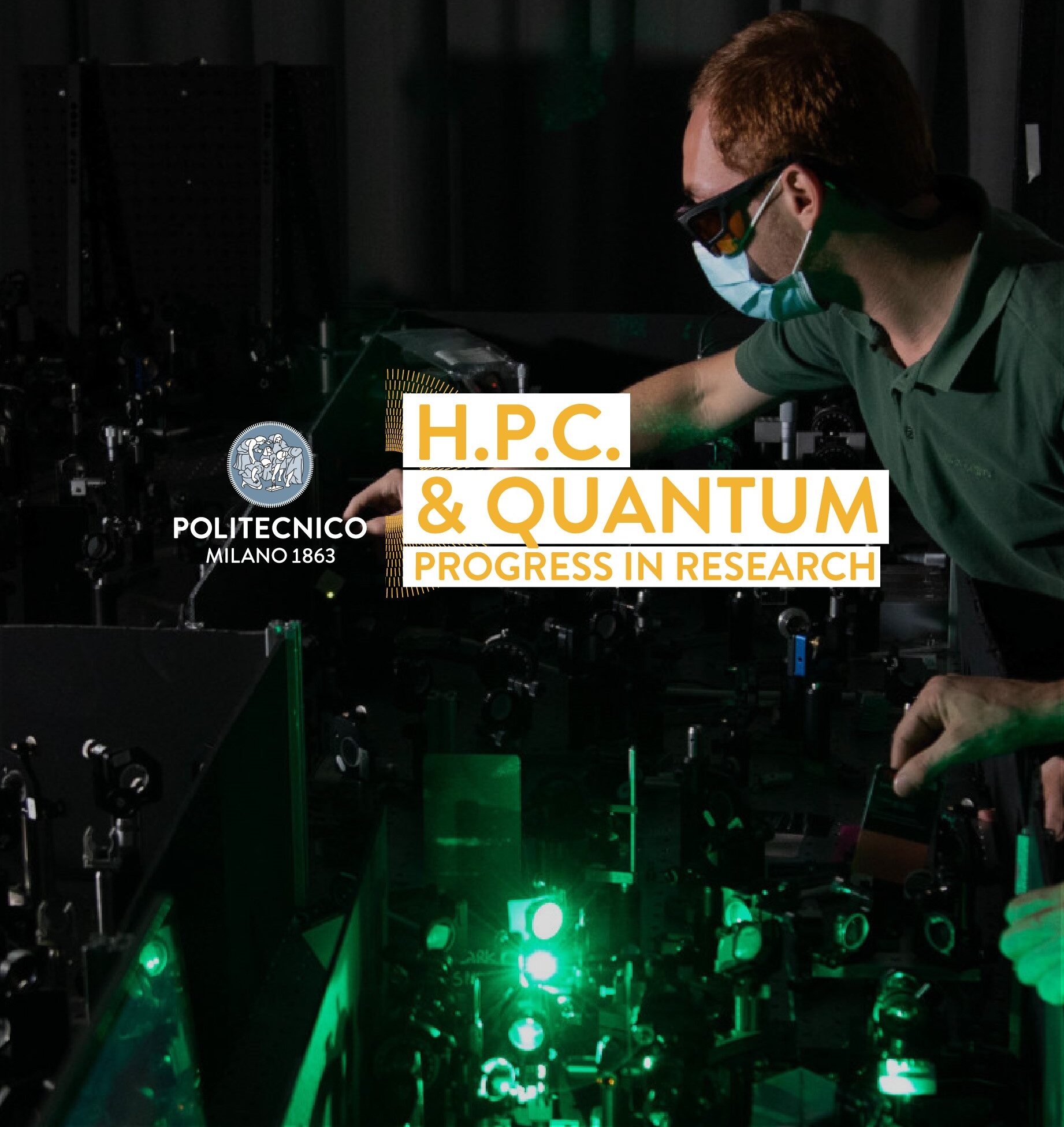
LIGHT-CAP: a new concept for solar batteries from the Poli
Developing the prototype for a new device capable of absorbing, converting and storing solar energy sustainably and with low production costs: this is the ambitious objective that has brought together research centres from around the world, coordinated by the Italian Institute of Technology. This is LIGHT-CAP, a four-year research project which has received €3.18 million in funding from the European Union as part of the Horizon 2020 programme.
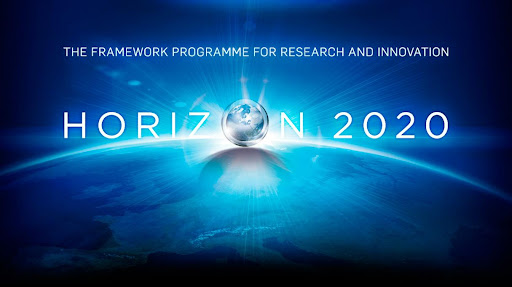
THE PROBLEMS WITH SOLAR ENERGY
The traditional methods of converting and storing solar energy are largely based on silicon solar panels and large, cumbersome batteries. Moreover, there is an undeniable issue linked to the supply of the materials required to construct these components.
With LIGHT-CAP, the researchers involved are seeking to develop a new structure based on nanotechnologies which is capable of combining the two functions - conversion and storage - into a single versatile, portable device manufactured using environmentally-friendly, easily-obtainable materials (such as minerals found in the earth’s crust) in order to avoid the critical issues related to the supply of traditional materials.
SIMPLE, HIGH-QUALITY INGREDIENTS
A combination of carbon-based nanoparticles (such as graphene) composed of a few types of metal oxides (indium, zinc and tin) normally used in electronic components for mobile phones, displays and LEDs: materials with excellent energy storage capabilities and long-term stability, allowing them to be charged and discharged many times over before reaching the end of their working life
A device with these characteristics would represent an efficient solution for not only absorbing solar energy, but also converting, storing and releasing it in a controlled way as electrical energy, potentially with a significant impact, especially in the field of mobile electronics.
The project’s innovative ideas were successful in the Horizon 2020 European call for proposals for “Breakthrough zero-emissions energy storage and conversion technologies for climate-neutrality” as part of the “FET Proactive: Emerging Paradigms and Communities” programme.
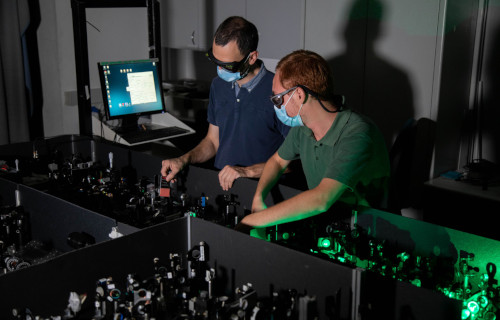
HOW WILL IT WORK?
The researchers are working on designing a prototype which could even be ready by the end of the four-year project. It is a device similar to a battery capable of being recharged using light, which would then store the energy to be used later on in order to power a piece of portable equipment.
To do this today, it takes two devices: a photovoltaic cell and a battery. LIGHT-CAP will be able to do both things. The mechanism that underpins the project is the separation of positive and negative charges after light irradiation on interfacing between two nanomaterials, one made up of nanoparticles measuring just a few nanometres, the other as fine as one or a few atoms like graphene.
THE ROLE OF POLITECNICO
The university will be tasked with combing through and studying the optical properties of the nanomaterials produced, using ultrafast continuous spectroscopy (up to a time resolution of just a few femtoseconds): techniques in which the Politecnico is a world-leading organisation (as previously discussed in the context of TOMATTO, the €12 million EU project aimed at observing what happens to molecules in the moments immediately following their interaction with light).
The fundamental interactions between the different types of nanomaterials in liquid-liquid, liquid-solid, and solid-solid interfaces will also be studied. The experimental measurements will be corroborated by a variety of theoretical models. The Politecnico di Milano will also coordinate the project’s second Work Package, which focuses on the optical characterisation, optoelectronic characterisation and electrical characterisation of the new nanomaterials and new interfaces and heterojunctions.
Find out all about frontier research at Politecnico and on the topics defined by the European Commission as part of the Recovery Plan. Visit the Next Generation EU website of the Politecnico di Milano .
Credits home/header: polimi.it
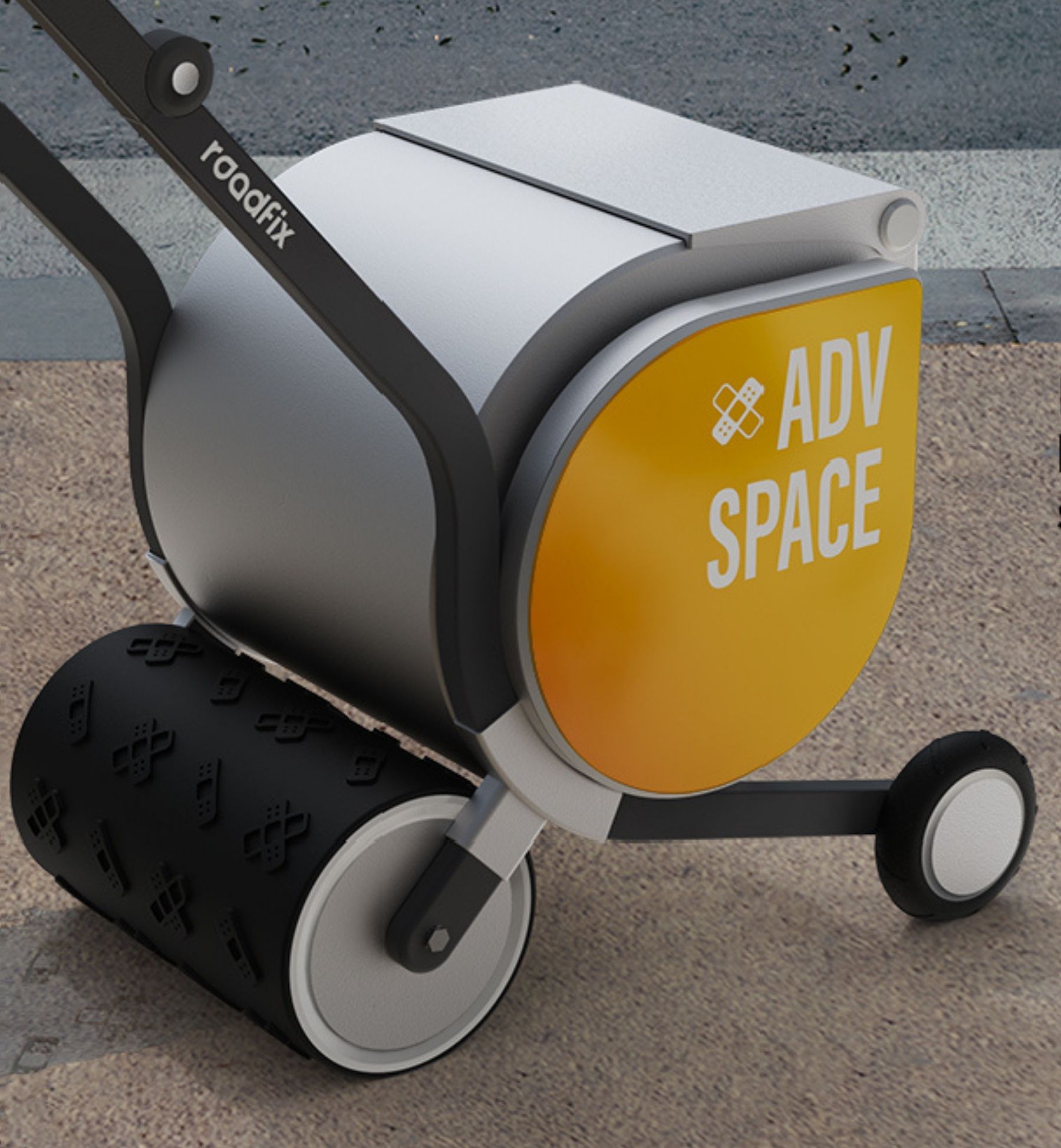
Safer, beautiful and sustainable roads: the JAMES DYSON AWARD given to three students of Politecnico
A team of three polimi students won the 2021 edition of James Dyson Award Italy, the international design award dedicated to young engineers and designers. The three Alumni of Politecnico stood out as the best young inventors among over 2,000 participants who presented their inventions from 28 countries.
Luca Grosso, Silvana Migliozzi and Alessio Puleo, the three master's students of Intregrated Product Design , won the award with the Roadfix project: a tool designed to repair damages to the road surface at no cost to the public budget . In fact, it would be the companies that economically bear the costs of the repairs. The idea is that Roadfix is able to offer advertising spaces to companies, which could imprint their logo on the "hole", once filled, and sponsor its repair, taking advantage of an aesthetic and commercial opportunity oriented towards social value.
HOW DOES IT WORK?
Accidents due to poor road maintenance are the first cost item for municipalities. Pot holes are among the main causes of accidents, especially for micro-mobility. To date, the holes are repaired using cold or hot bitumen using a shovel to fill and level. These methods allow for makeshift repairs that have a very limited duration over time and give an unpleasant aesthetic result.
The idea of Roadfix was therefore created with the aim of improving road safety with more precise and safe repairs , simplifying the work of operators as well as opening new frontiers of marketing. An inspiration that comes from the Japanese art of Kintsugi, that is, repairing broken objects with gold to enhance the cracks and give them a new life. The concept is to improve road defects to make them resources for the city .
The tread will in fact become customizable: the sponsoring companies will be able to imprint a brand on the "patch" and will be able to insert graphics on the side parts of the machine itself , to have also vertical visibility during the repair of the road surface. With this new opportunity it will be possible to find companies willing to advertise by helping our cities.
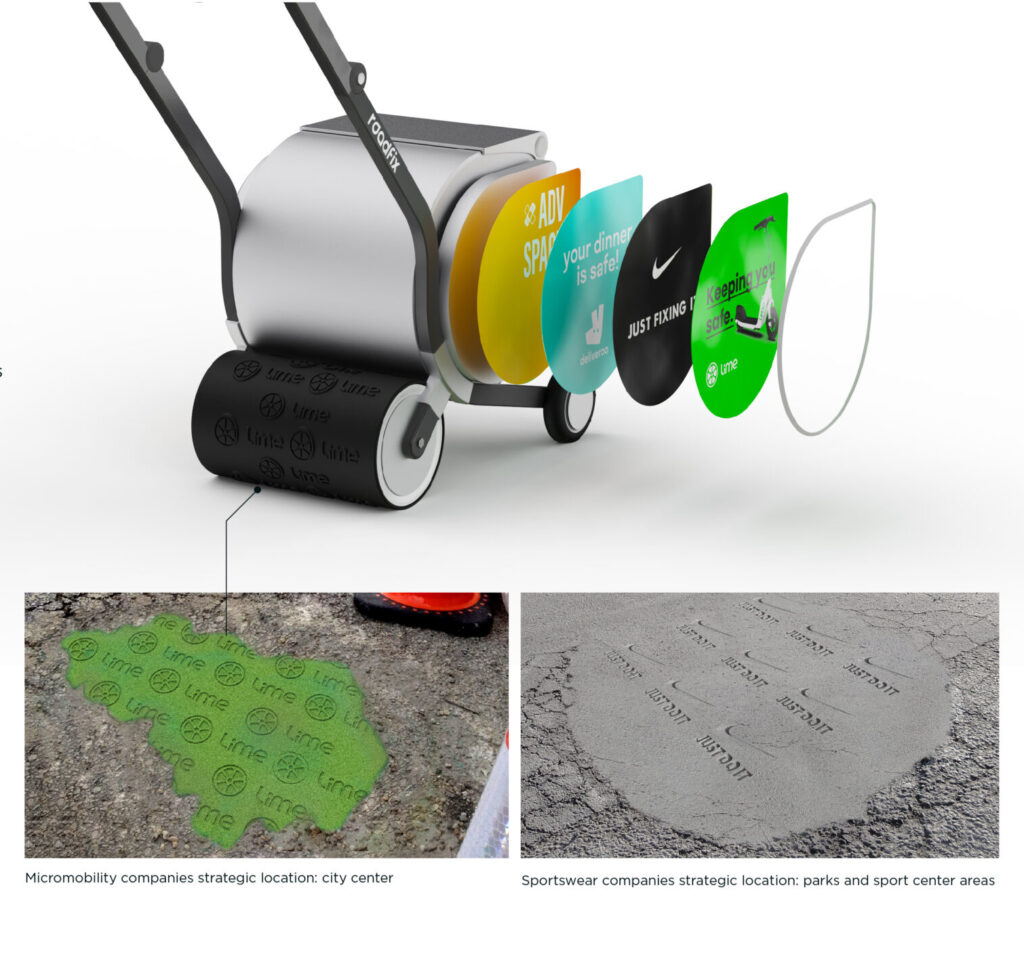
The initial design concept was born during the Concept Design Laboratory of prof. Massimo Bianchini at the Politecnico. After an initial phase of research and development of ideas, it was developed with a study model and tested to understand its ergonomics, proportions and user experience.
The next step is to create a prototype equipped with electrical components for a road test phase , and have some operators try it out to understand in more detail issues related to ergonomics and user experience. Furthermore, companies operating in similar sectors have been identified to propose collaborations to the project.
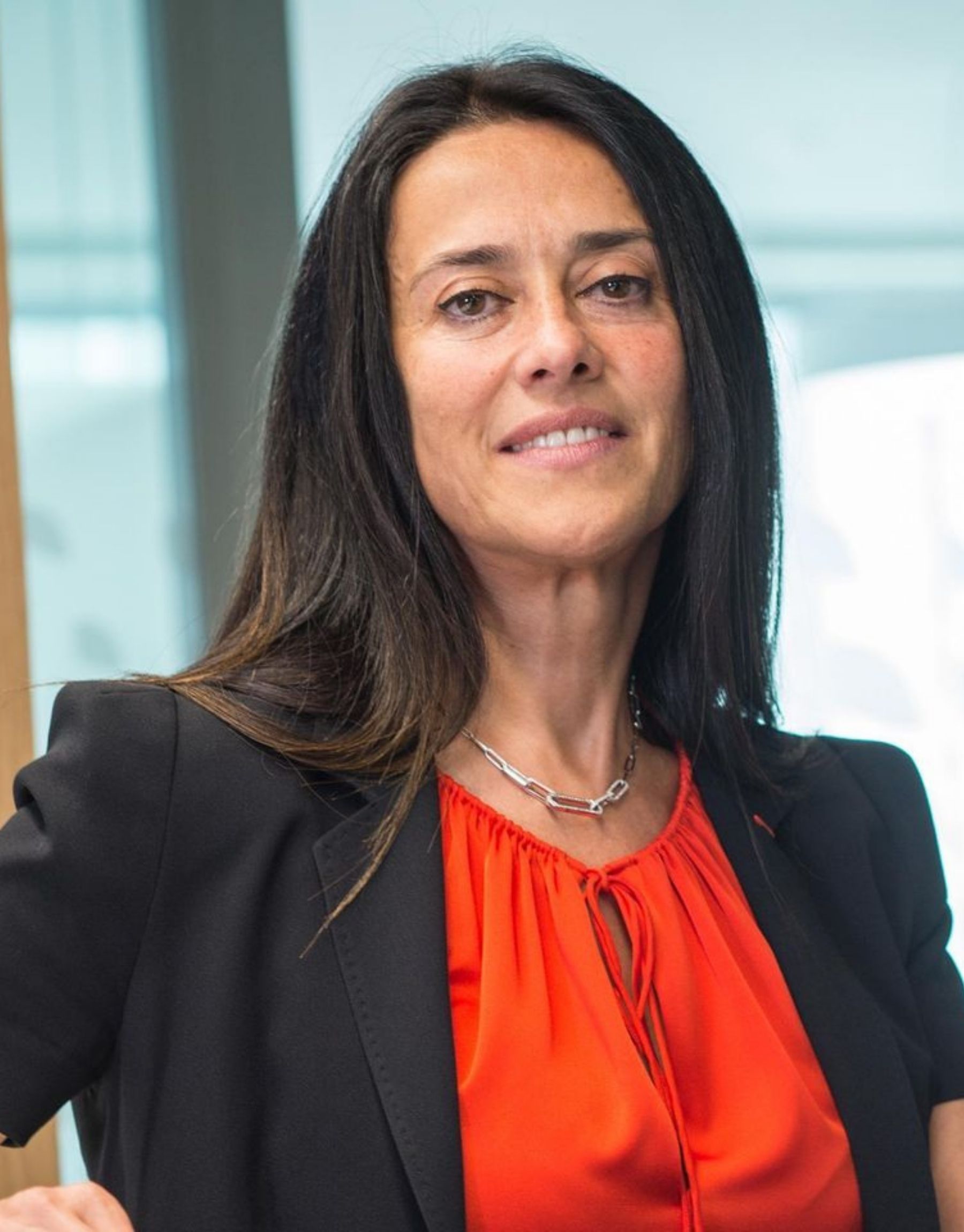
Alumna Grazia Vittadini is the new CTO of Rolls-Royce
Grazia Vittadini, Alumna Ingegneria Aeronautica 1998, is the new Chief Technical Officer chosen by Rolls-Royce .
After almost 20 years of career in Airbus, from 2 November Vittadini will join the British group that produces engines for aircraft, ships and turbines for energy production , and then definitively assumes the role of CTO at the end of the first quarter of 2022.
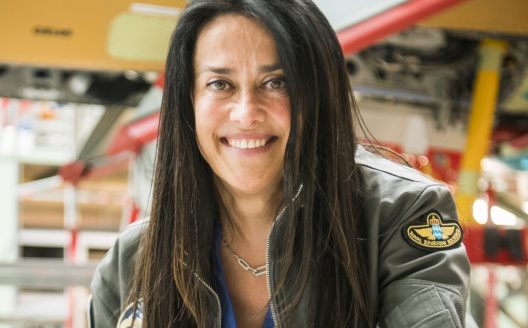
Last year in the book “ Alumnae. Engineer and Technologies " told us:
“Today we face a great environmental challenge, this is also a field in which my work can have a positive impact . One of the most important objectives of my work, in fact, is to arrive at solutions for zero impact flight, lowering fuel consumption as much as possible".
A JOURNEY TOWARDS ZERO EMISSION WITH ROLLS-ROYCE
The Italian technology expert switches to Rolls-Royce at the strong will of its CEO, Warren East , as reported by an article in Sole24Ore .
“I am pleased to announce the appointment of Grazia Vittadini. He brings with him his broad expertise in emerging and disruptive technologies that will help us on our journey to net zero emissions and further expand digital innovation. He also has many years of experience working with our core technologies and has a deep understanding of the safety-critical systems that are at the heart of our product portfolio ”.
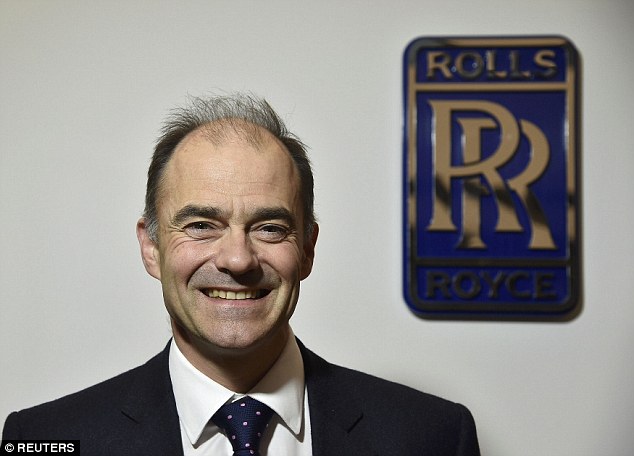
The choice of the Alumna is thanks to the long experience that in Airbus has seen her leading innovative projects to apply new sustainable technologies to fly with "zero emissions" , such as electrification and hydrogen propulsion , but also digitalization, artificial intelligence, autonomous driving and the use of advanced materials, creating a diversified and high-performance technological organization .
Vittadini's goal within the British company will therefore be to guide Rolls-Royce's research and development towards the creation of less polluting engines, an extremely important step, as Alumna herself pointed out:
"I appreciate the opportunity to join the Rolls-Royce family and continue its drive to connect, nurture and protect society. The commitment to ensuring that all new products are compatible with net-zero operations by 2030 is bold and I look forward to making it, together with the exceptional Rolls-Royce teams around the world."
Girls@Polimi: with a voluntary donation (you choose the amount!) you can contribute alongside other donors to the creation of scholarships that support one or more female students enrolling on the first year of the Laurea Magistrale (Equivalent to Master of Science) programmes in Engineering, which currently have low female representation. Give now
Credits home: www.wsj.com/
Credits header: www.flightglobal.com/
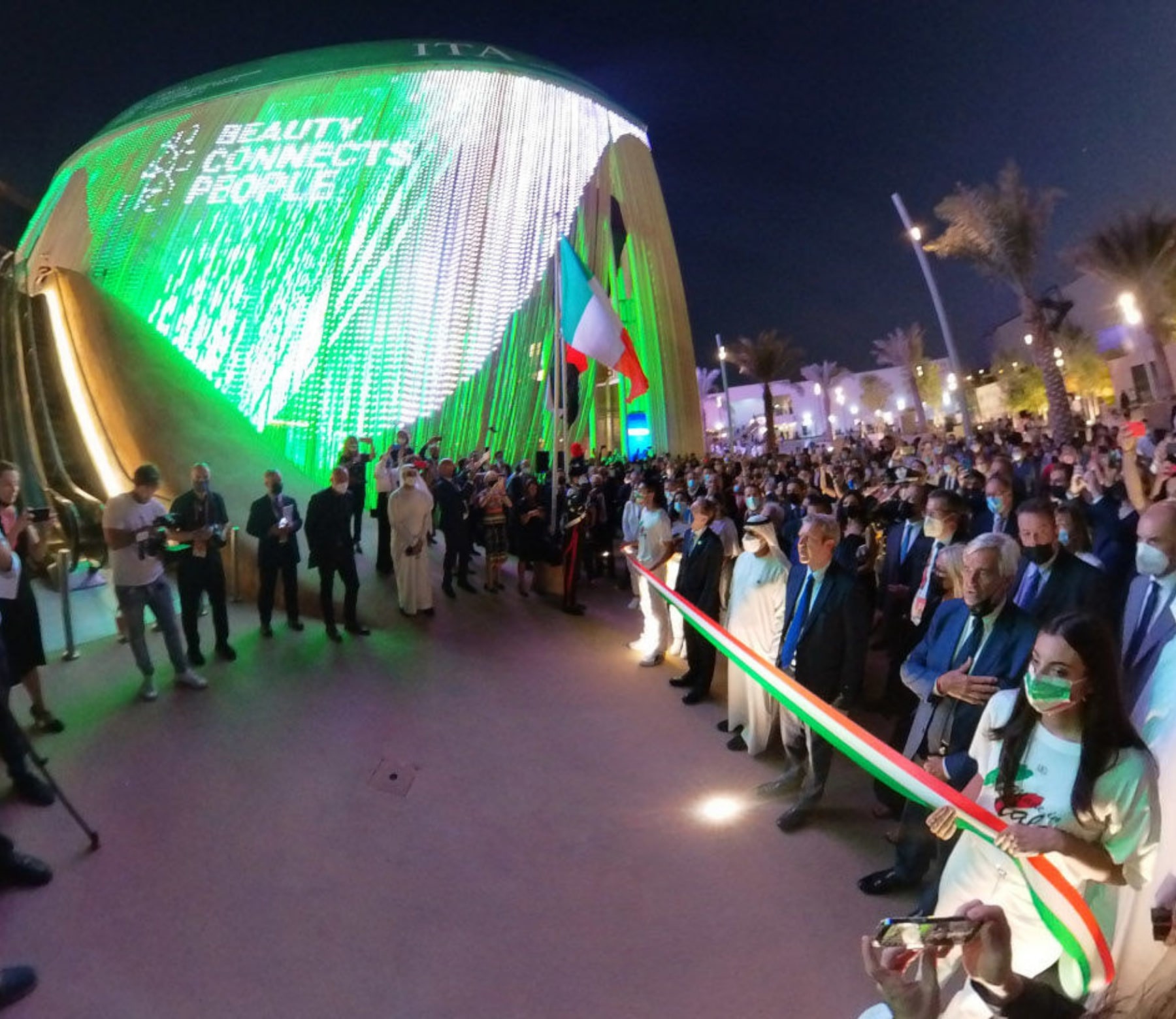
Expo Dubai 2020: learn more about the initiatives of Politecnico
With the inauguration of October 1, 2021, Politecnico di Milano became part of Expo Dubai 2020 as a partner of the Italian Pavilion at the universal exhibition. In this capacity, it will organize important events that will touch on various topics: aerospace technologies, architecture and design, education for female empowerment.
By involving teachers, alumni and students , the Politecnico thus makes available its skills in the fields of creativity and innovation, thanks to its experience as coordinator of research networks at national level and strong links with the Italian industrial system.
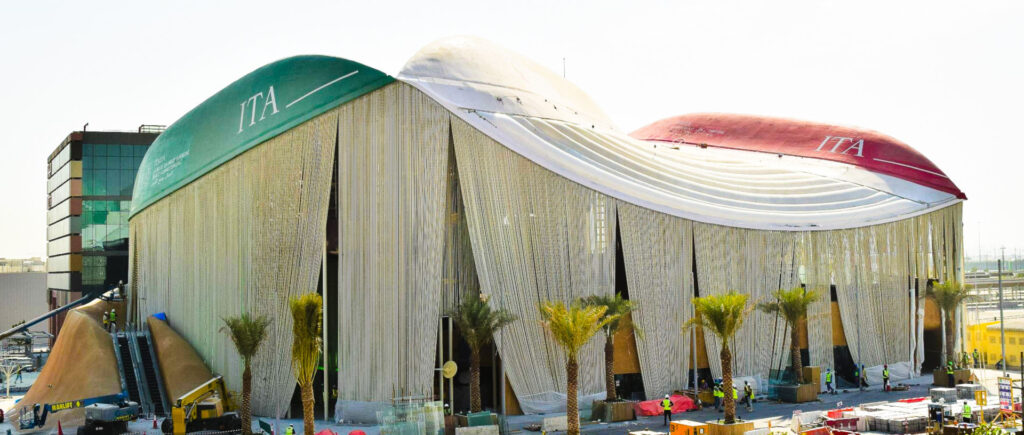
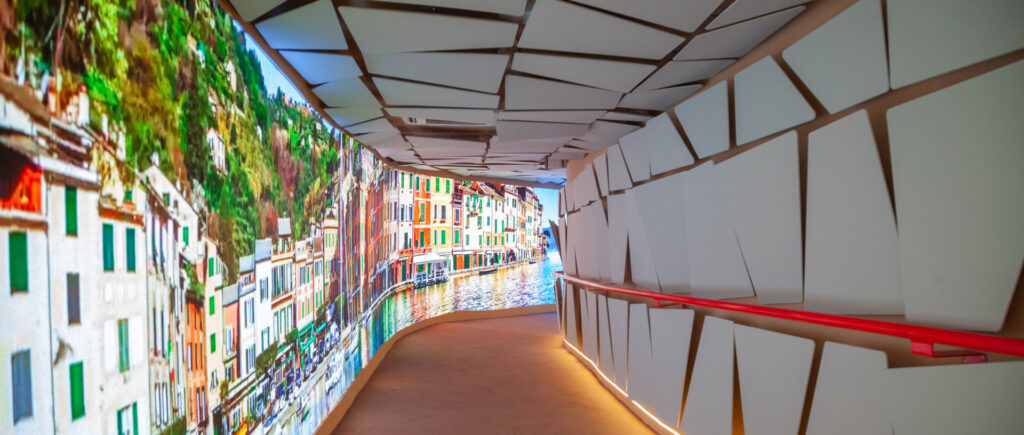
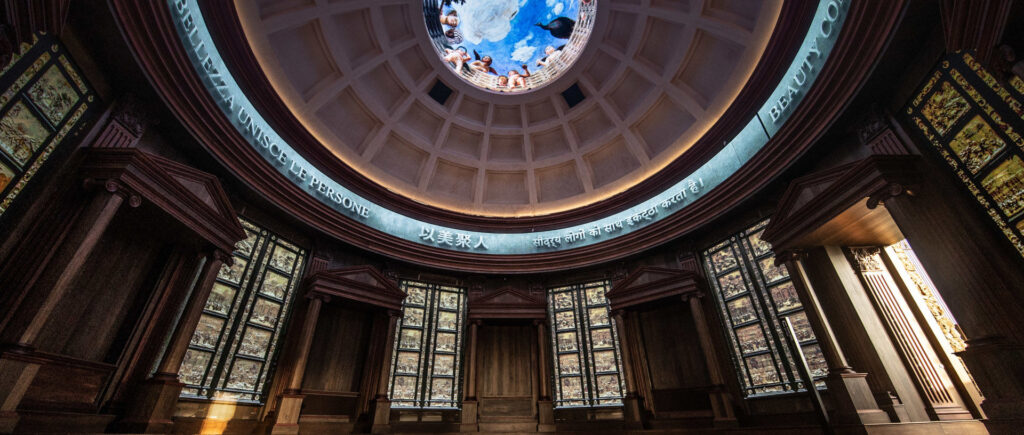
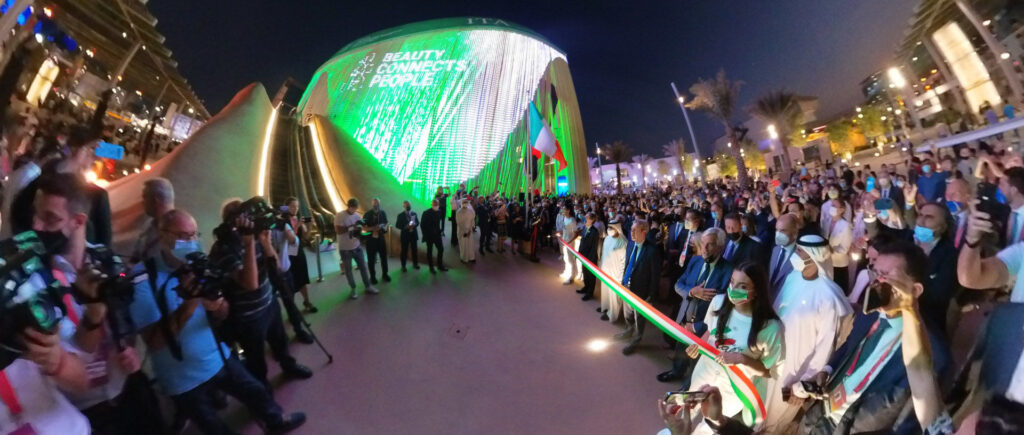
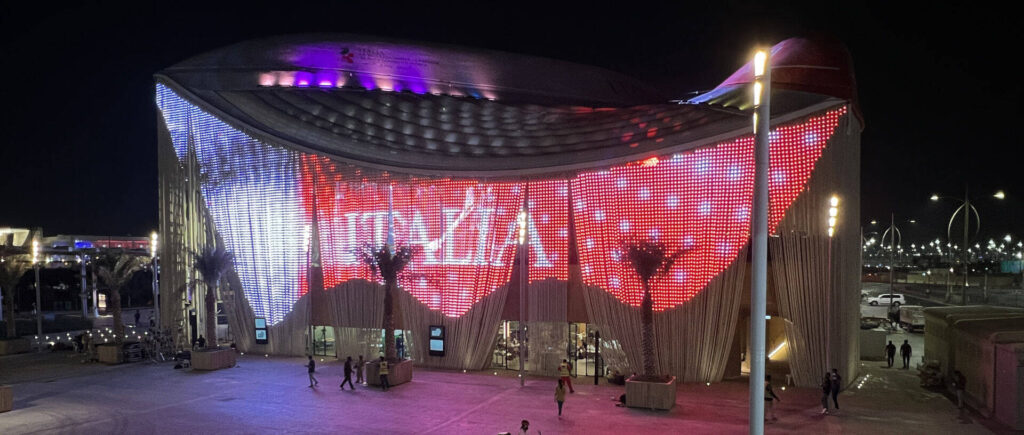
Among the next scheduled appointments, we point out the forum Space4Sustainability of October 18th , where astronauts, innovators and internationally renowned scientific personalities will discuss of the most significant implications of space exploration on sustainability, health and well-being, safety.
Among the experts, there will also be professor Annalisa Dominoni and professor Benedetto Quaquaro, professors of the Space Design course at the Politecnico di Milano, who at 5.00 pm will speak in the panel "Design in Orbit" (click here to watch the event).
INNOVATION HOUSE: THE "OUTSIDE EXPO" POLITECNICO
Outside the Expo, on THE 1st of October the Innovation House was inaugurated, the "house of Politecnico" stemming from the collaboration between the Lombardy Region and the Milan Polytechnic Foundation (we talked about it here).
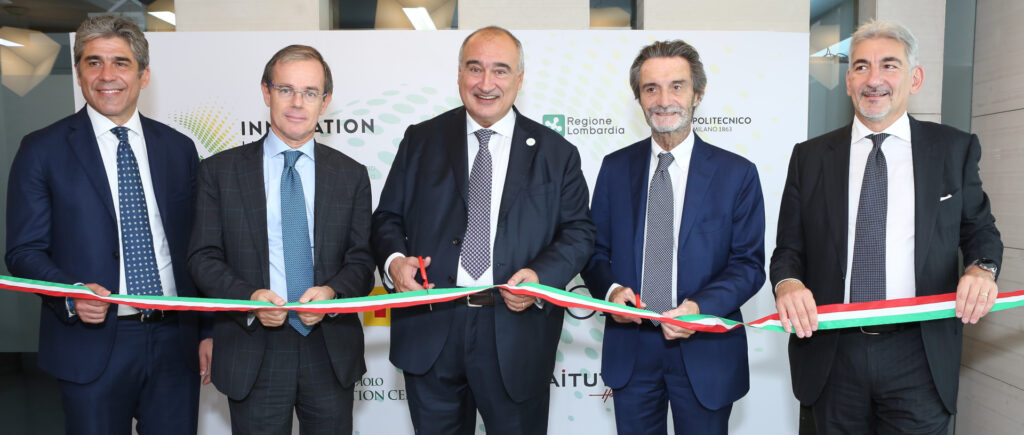
Located a few steps from the Dubai Universal Exposition site, Innovation House is the place to be of polytechnic origin, a sort of "Fuori Expo" , in the footsteps of the Fuori Salone, where companies from all over the world are invited to become partners to organize events, business, cultural and convivial meetings, open new connections, generate new business ideas in a context with a target of millions of international visitors.
Here all Alumni and all Alumnae are welcome together with the companies they represent and for who they work: the Innovation House is designed to be a support center for all the realities that share the DNA and principles of Politecnico. An opportunity to create a system and continue to cultivate a unique ecosystem in terms of excellence and innovative capabilities , together with companies and institutions (read here to find out more).
Credits header and home: Massimo Sestini
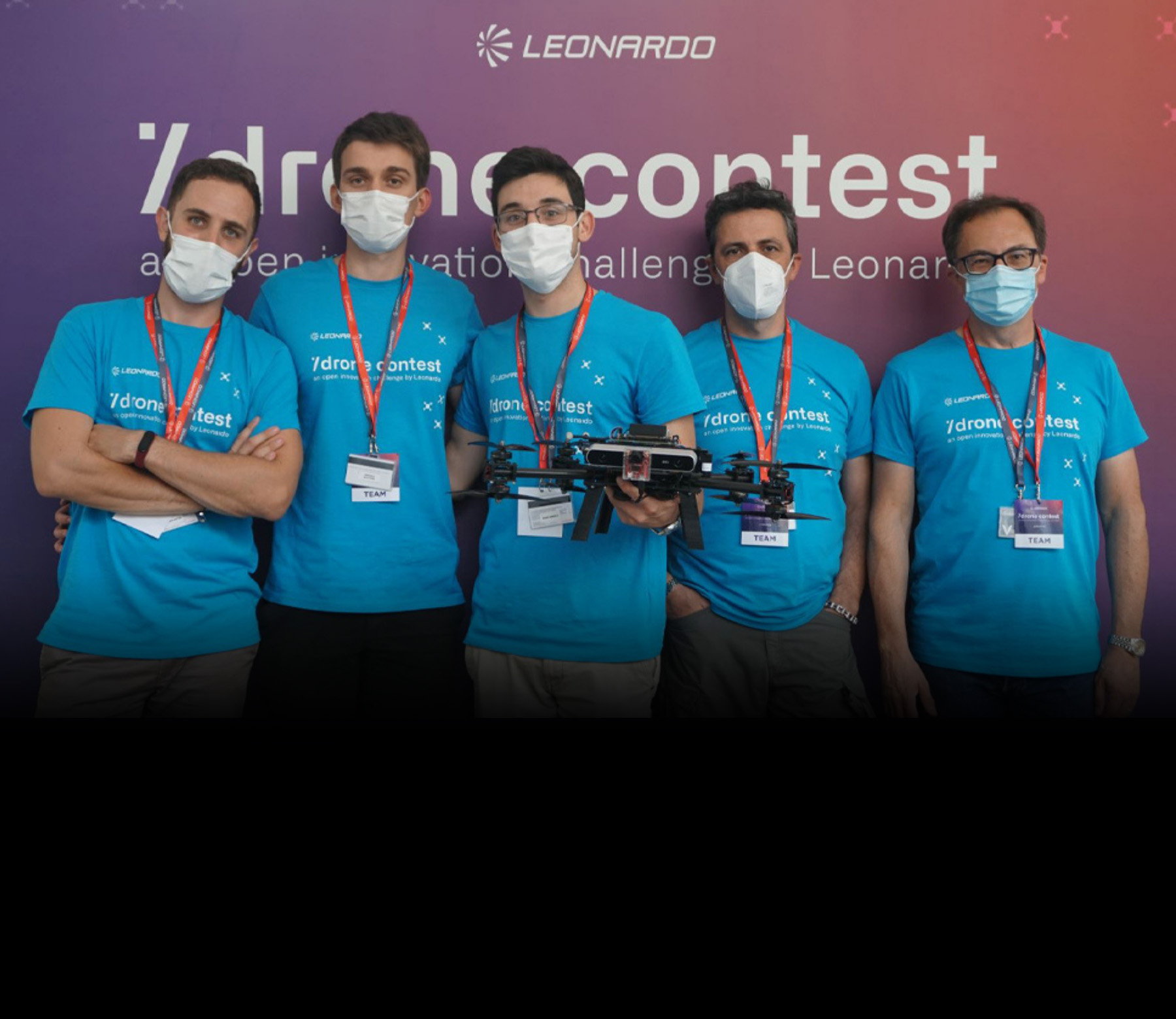
Artificial Intelligence: first place for Politecnico at Leonardo Drone Contest
Politecnico di Milano, after the victory last year, also won the second edition of the “Leonardo Drone Contest. An Open Innovation Challenge ", a unique competition in Italy, launched by Leonardo to promote the development of Artificial Intelligence applied to the field of unmanned systems . It is part of a three-year experimental project that will close in 2022 and puts the Unmanned Aerial Vehicle (Uav) under the spotlight , remotely piloted aircraft, to develop new technologies and feed the ecosystem made up of companies, SMEs and universities.
The competition was held in several sessions from 28 to 30 September in Turin, in the headquarters of the Leonardo Aircraft division, where the teams of Politecnico di Milano, Politecnico di Torino, Alma Mater Studiorum - University of Bologna competed. Sant'Anna School of Advanced Studies of Pisa, University of Rome Tor Vergata and University of Naples Federico II.
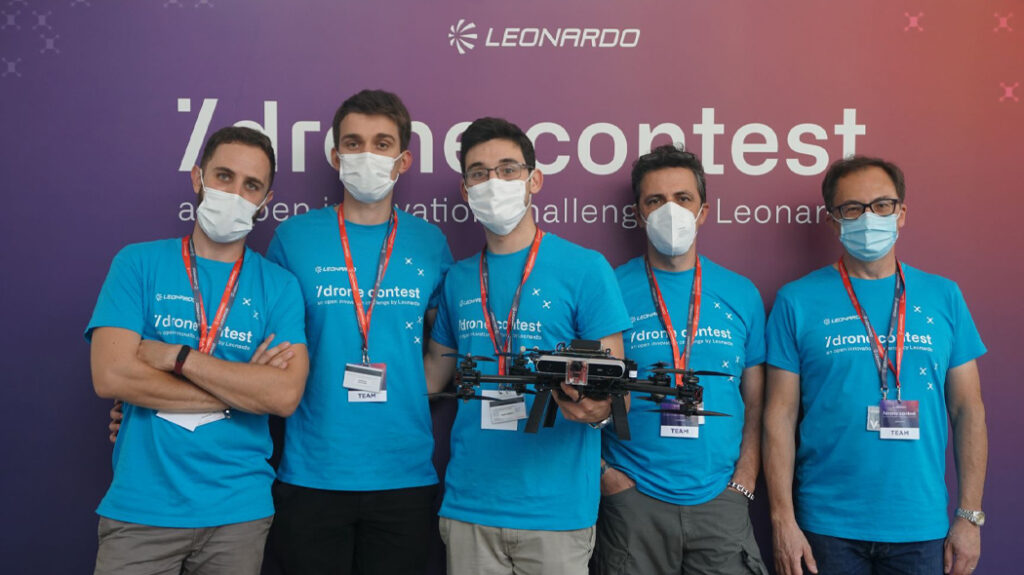
(Credits: wired.it)
Each team has deployed a drone with the task of collecting, through photos and videos, information to allow the planning of the landing mission. The drones, therefore, with the information received, moved autonomously between buildings and areas with reduced visibility to complete their mission. The Polytechnic team, led by the PhD student Gabriele Roggi, developed the autonomous navigation, trajectory planning, collision avoidance and landing systems for the drone ROG-2 , developed in collaboration with the spin off of the Poly ANT-X .
" The performances of the teams in the race have improved dramatically and we are seeing how all the objectives set at the birth of the" Drone Contest " are progressively becoming reality", commented Laurent Sissmann, Senior Vice President Unmanned Systems at Leonardo . "Thanks to the three-year course of the competition we intend to create a fruitful collaboration to feed the network of companies, SMEs and Universities, as well as wanting to stimulate the entrepreneurial talent of the young participants which will lead to the birth of start-ups in the sector" .
Several newspaper reported on the event, among notable ones: Il Giorno e Wired.
Among the most important university competitions, we also point out the imminent final of the Indy Autonomous Challenge , which we also talked about in issue 9 of MAP, on page 28.
With a donation of € 30,000, you help support a doctoral student for all three years of his or her research path. Scholarships for PhD students are awarded each year in November on the basis of merit criteria. Donate now.
Credits header: www.quadricottero.com
Credits home: wired.it
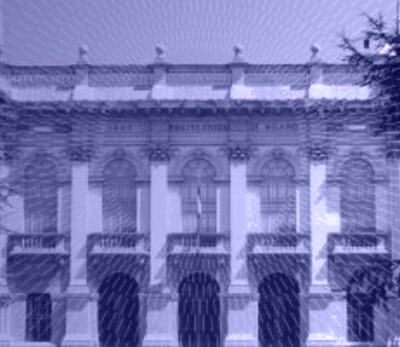
Women’s Forum G20 - hosted at Politecnico di Milano
The Politecnico di Milano on 18 and 19 October 2021 will host the Women's Forum G20 Italy "A She Covery for all", a series of events, conferences and discussions that bring center the female world as the engine of the pandemic recovery (read more about the program).
The G20 Italy Women's Forum was born on the occasion of the first Italian Presidency of the G20 to promote dialogue between public and private international decision-making leaders and develop concrete proposals and solutions under the banner of "She-Covery" .
The recommendations elaborated through the interventions of international speakers and participants will be discussed at the G20 tables where, in addition to gender issues, the main opportunities for relaunching the country will be addressed to make women protagonists of the new global challenges: from inclusive technology, new jobs of the future, ethical and responsible finance to urgent issues such as climate change and access to health.

POLITECNICO TO HOST THE WOMEN'S FORUM
The Politecnico di Milano will be the "home" of the Forum for its Milanese days. Diversity and equal opportunities have long been considered two strategic objectives for the University, as they are indispensable factors for the objectives of excellence in education, research and professional growth of students.
On Monday 18 October Rector Ferruccio Resta will participate in “ Educating in a disrupted world: the Champions who attract girls in STEM” , a panel that aims to deepen the gender gap that exists in the world of STEM (Science, Technology, Engineering and Mathematics) and how to bridge it through school education and beyond.
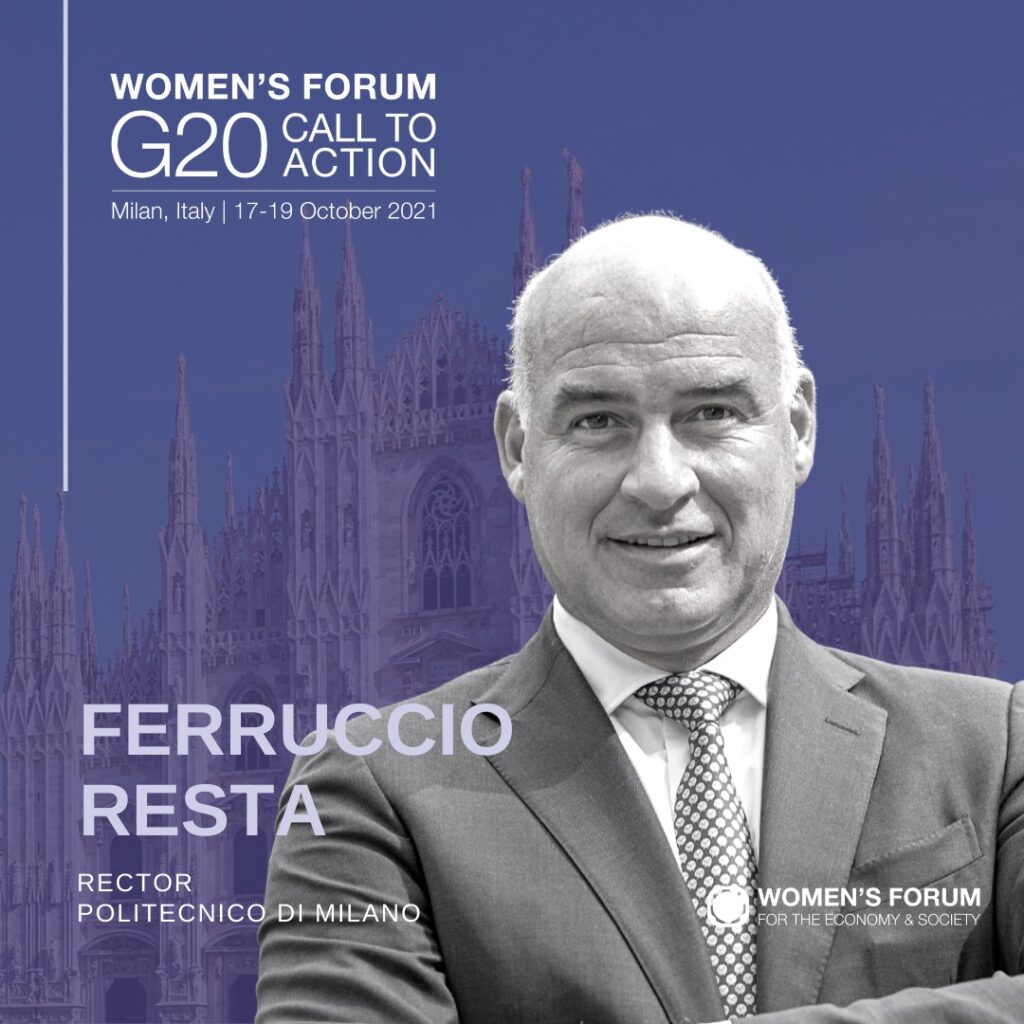
Women's Forum G20 Italy is a project that, as underlined Chiara Corazza , Special Delegate for the G7 and G20 of the Women's Forum for the Economy and Society: "aims at guiding economic and social recovery with strength and determination, promoting new models of public and private leadership that leave no one behind and focus on diversity and She Covery to propose a paradigm shift in which women will be increasingly protagonists, together with men, in the restart of the country ".
By virtue of the fundamental role that the Alumni community plays in spreading the principles of Politecnico around the world, participation in the online Women’s Forum G20 Italy is free for all Alumni and Alumnae.
Credits header: Photo by Maksym Harbar on Unsplash

